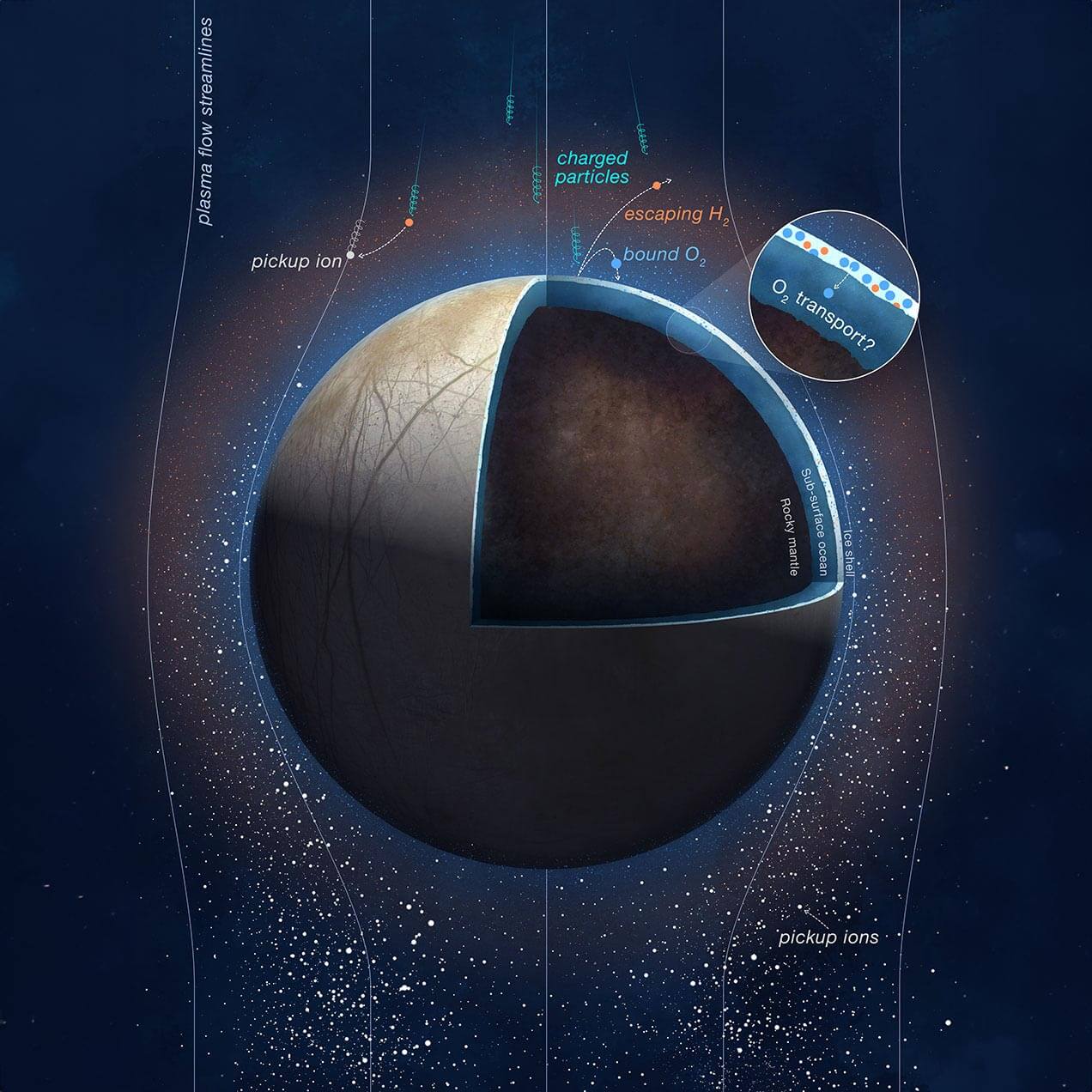NASA's Juno spacecraft directly measured charged molecules of oxygen and hydrogen from the atmosphere of Europa, one of Jupiter's largest moons. According to a new study by scientists from SwRI and Princeton, these observations provided important constraints on the potential oxidation of its subsurface ocean.
NASA's Juno spacecraft directly measured charged molecules of oxygen and hydrogen from the atmosphere of Europa, one of Jupiter's largest moons. According to a new study by scientists from SwRI and Princeton, these observations provided important constraints on the potential oxidation of its subsurface ocean.
"These findings have direct implications for the potential settlement of Europa," said Juno Principal Investigator Dr. Scott Bolton of SwRI. "The research provides the first direct measurement in the field of water components that exist in Europe's atmosphere, which gives us a narrow field that can support meetings."
In 2022, Juno completed a flyby of Europa, coming as close as 352 km from it. The JADE instrument on Juno detected significant amounts of charged molecular oxygen and hydrogen that the atmosphere is losing.
"For the first time we were able to definitively identify oxygen and hydrogen through measurements in the field and get further confirmation that Europa's atmosphere is mainly composed of oxygen and hydrogen molecules," said Dr. Robert Ebert from SwRI.

The source of these molecules is thought to be water ice on the surface of Europa. Jupiter's raging radiation breaks up H's molecular bonds2O, leaving oxygen and hydrogen. The heavier oxygen molecules remain more confined to the ground or the near-ground atmosphere, while the lighter hydrogen mostly escapes into the atmosphere and beyond.
The oxygen formed in the ice is lost from the atmosphere and/or stored in the ground. The oxygen remaining in Europa's ice may reach its subsurface ocean as a possible source of metabolic energy.
"Europa's ice sheet absorbs radiation, protecting the ocean below. This absorption also produces oxygen within the ice, so in a way the ice sheet acts as Europa's lungs, providing a potential source of oxygen to the ocean," said Dr. Jamie Shalai, lead author of the study. "The narrow limits we impose on the total oxygen output in Europe are now around 12 kg per second. Before Juno, previous estimates ranged from a few kilograms per second to more than a thousand kilograms per second. The findings show unequivocally that oxygen is continuously produced on the surface, only in smaller amounts than we expected."

The new measurements help to better understand Europe and its surroundings, and open the door to new and more accurate models. The new study's estimate of how much oxygen is produced on Europa's surface, for example, could inform future studies related to its subsurface ocean and potential habitat. These observations provide the first measurements of the composition of charged particles in Europa's environment, and therefore provide an important new window into the complex interaction of the Moon with its environment.
"Europa is a fascinating object because scientists are sure there is a liquid ocean in its interior," Ebert said. "Water is important for sustaining life and is found in objects with changing properties. Europa is a good place to look for water in our solar system."
More of the topic in Hayadan:

2 תגובות
"Yashiv" as "can be settled" is the editors' new translation (or GPT)? I did not find a hint of this in the language academy and in the dictionaries.
If Europe, the moon of Jupiter, can be settled, all the ultra-Orthodox, all the Christians, all the Bibists and all the Arabs must be sent there gradually over time. The ultra-Orthodox will establish a Halacha state. The Christians and the bibists will be 'strengthened' and will be abolished before them. And the Arabs, like the Arabs, will attack all the time and force even the ultra-Orthodox to... kill in the tent of the doctrine of justice.